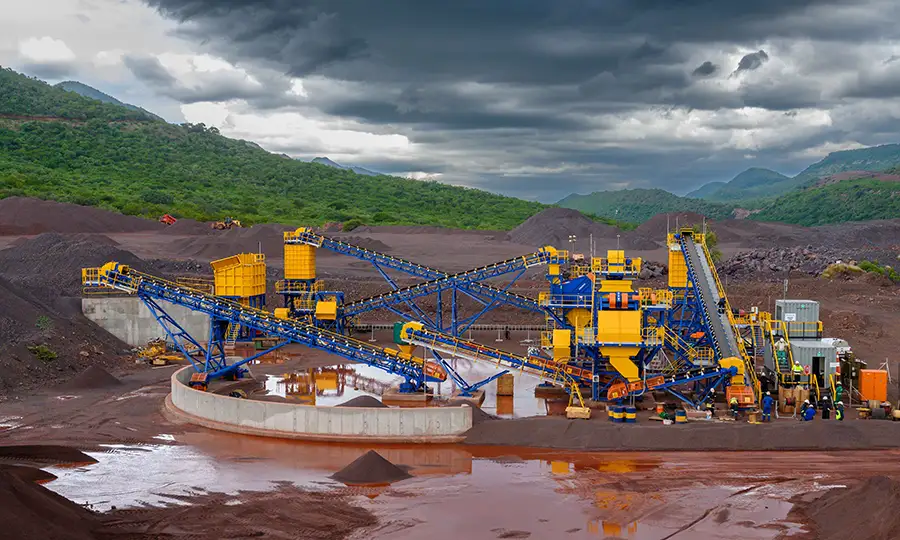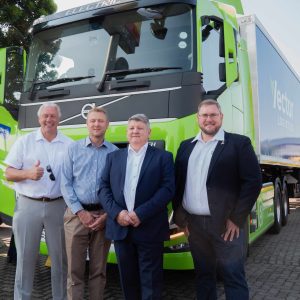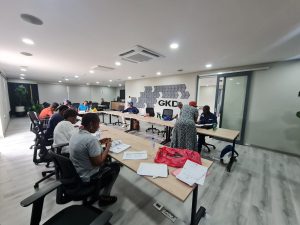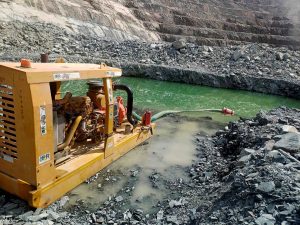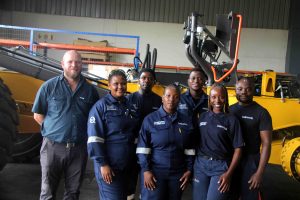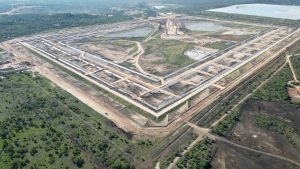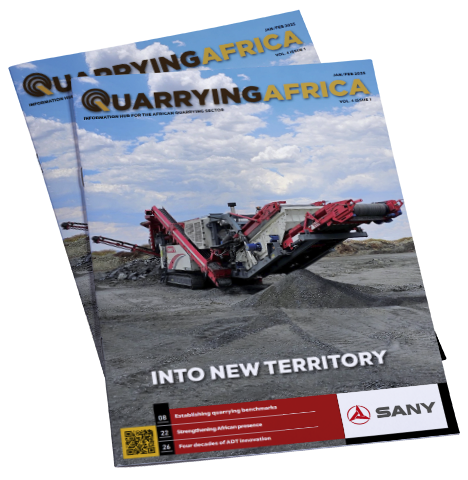Recovering saleable material from legacy mining dumps is one of the emerging paradigms across various commodity areas in the South African mining industry. Central to this growing trend is the availability of methods and technologies which offer better recoveries than in the past, allowing for the recovery of valuable material from previously discarded waste.
A case in point is a stockpile recovery project at the old Thabazimbi Iron Ore Mine in Limpopo, South Africa. Owned by a leading steel producer, the project is contracted to United States-based Phoenix Global on a build- own- operate -transfer (BOOT) basis. Phoenix’s strong materials handling skills, its ability to finance and a joint track record and relationship built on trust with Gravmax Africa made this project possible.
Gravmax Africa, a specialist in minerals processing and metal recovery plant design, construction and operating services, was subcontracted by Phoenix Global to design, build and operate the process plant for this particular project. The project comprised a two-stage crushing and screening plant supplied by Weir Minerals Africa, as well as a separate dense media separation (DMS) plant.
Dieter Nebbe, Plant Manager at Gravmax Africa, explains that the Weir Minerals plant is the first step in the beneficiation process – liberating the desired iron ore from the unwanted gangue minerals. This project is focused on the production of fine, saleable iron ore from a banded iron stone formation. The hematite occurs in thin layers in between layers of gangue minerals.
Nebbe explains that the Weir Minerals crushing and screening plant is deployed to liberate the iron ore from the gangue material by crushing it all down to smaller than 5 mm, before processing it through the dense media separation process, where the liberated hematite and gangue minerals are separated to produce a high quality, fine iron ore product.
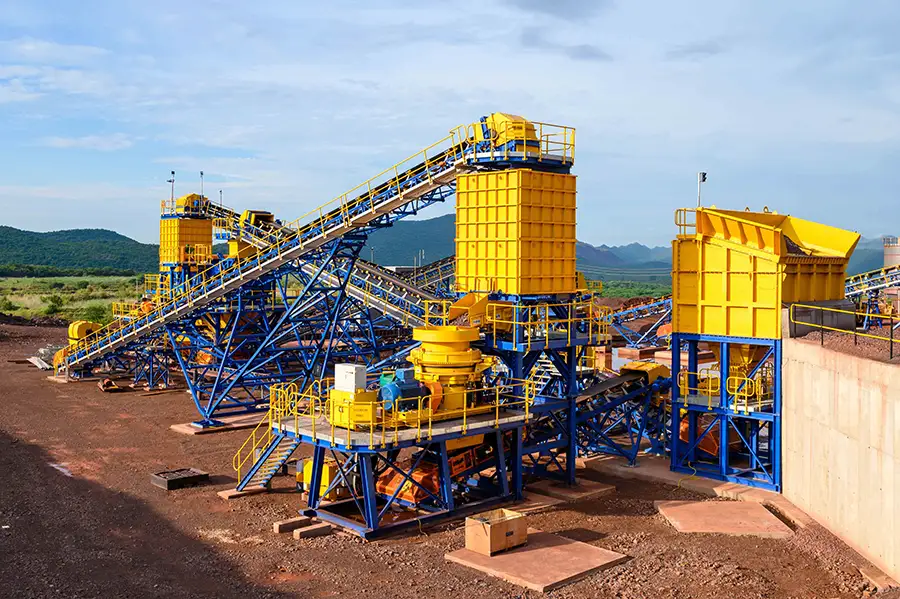
Why Weir Minerals?
Key to the decision to opt for the two-stage crushing plant from Weir Minerals Africa was the configuration, explains Corné Boshoff, Director at Gravmax Africa. The Comminution team was able to present a solution that met Gravmax Africa’s needs, particularly with regards to effective choke feeding conditions for the cone crushers.
Karabo Moalamedi, Advanced Comminution Specialist at Weir Minerals Africa, explains that the two cone crushers in the plant are coupled with a surge bin tower and a Trio EF pan feeder to guarantee enough surge capacity right in front of the cone crusher to ensure adequate choke feeding conditions at all times. This also protects the crusher from intermittent feeding which reduces equipment reliability.
“This direct feed configuration was one of the key factors in our buying decision,” explains Boshoff. “Having a surge bin directly before each crusher, coupled with a pan feeder that feeds material out of the bin straight into the crusher, means that there is no delay time, and it is easy to control the level of material in the crusher. This ensures good inter-particle crushing due to the choke feed conditions, which in turn results in preferential breaking at the grain boundaries, which ultimately allows for better grades and iron recovery.”
Due to the fast-tracking requirement of this project, Gravmax Africa preferred to deal with a ‘one-stop’ supplier that could provide all the equipment in a modular format. Renowned for its Trio jaw and cone crushers, Trio feeders and Enduron screens, Weir Minerals Africa was in a position to put all these together in a complete plant within a short lead time.
According to Boshoff, Gravmax Africa also wanted a dry process that could crush down to the required -5 mm fine size. Through simulation, Weir Minerals was able to prove the ability to produce this required very fine specification using its two-stage crushing and screening plant.
“The plant is unique in the sense that we crush the ore down to a -5 mm, using a dry process. Due to the liberation characteristics of this iron ore, we needed to crush it that fine to be able to upgrade it to saleable quality,” says Boshoff.
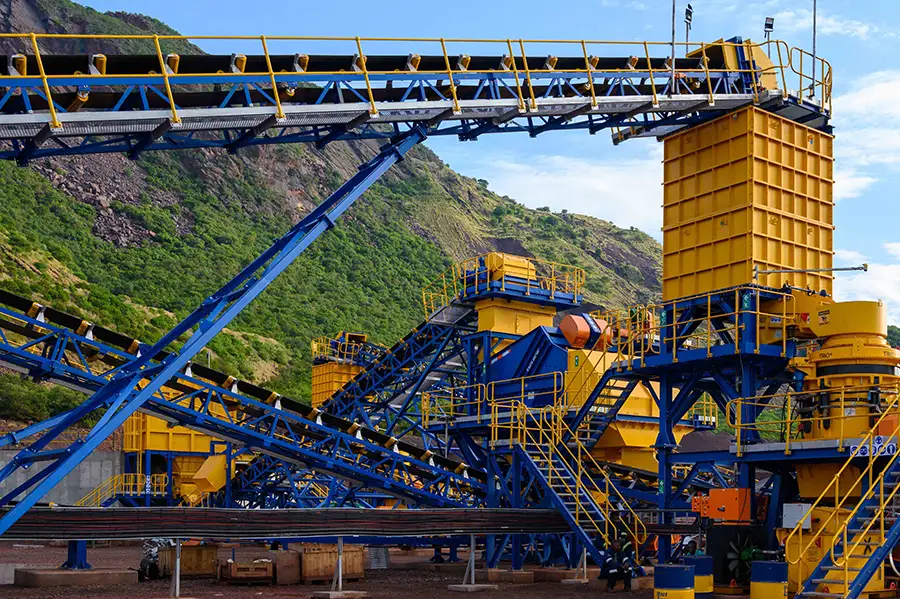
Plant in detail
Phoenix is responsible for all materials handling on the plant, which includes in-field mobile primary crushing and screening to supply a pre-crushed and screened ore stockpile. Ore is fed into a 15 m³ live volume capacity feed bin using front-end loaders. The bin was supplied with a static grizzly with a fixed 130 mm aperture. Ore is extracted from the bin at a controlled rate by means of a Trio EF3606 pan feeder.
From here, material is fed into an Enduron DHG24/48 double deck horizontal secondary screen with 20 mm top deck and 7 mm bottom deck apertures. The undersize product is taken directly to the final product radial stockpile.
The oversize material from the screen is redirected to the secondary crushing station, consisting of a Trio TC51 live-shaft cone crusher fed by a 16 m³ surge bin tower coupled with a Trio EF3606 pan feeder. Crusher product recirculates back to the DHG 24/48 screen to form the first closed loop of the crushing circuit.
Mid-size material from the DHG 24/48 screen (-20 mm +7 mm) is sent to the tertiary screen, an Enduron DHG21/54 double deck horizontal screen. This screen has 20 mm aperture on the top deck and 7 mm on the bottom deck. The oversize and mid-size materials are mixed and sent to the tertiary crushing station, another 16 m³ surge bin tower feeding a Trio TP350 pedestal (or fixed-shaft) crusher by means of an EF3606 pan feeder. The undersize product is again sent to the final product radial stockpile.
Product from the tertiary crusher is recirculated back to the DHG 21/54 tertiary screen, the second closed loop of the circuit. Final product is loaded to the radial stockpile by means of a 24 m Trio radial stockpile conveyor.
The different components of the two-stage crushing and screening plant are interconnected by means of a modular Trio conveyor system, with widths ranging from 600 mm to 900 mm wide and lengths from 7,5 m to 36 m.

Chosen equipment
Commenting on why the various pieces of equipment, in particular, were chosen, Moalamedi says for the secondary crushing, the team went for a Trio TC51 cone crusher which is based on a reliable proven design and ideally suited for demanding applications. This is a low maintenance unit which helps ensure operating costs are kept low, a key parameter in the client’s buying decision.
“On the tertiary crusher, we needed a machine that would produce a high fraction of fine material (-5 mm) for feed to the next stage of the process. The crusher would also need to cope with a high recirculating load. The chosen TP350 cone crusher offers just that as it is a high-speed machine with a high pivot point and larger throw which translates into high capacity crushing and a high reduction ratio,” explains Moalamedi.
The vibrating screens offered are heavy duty and are designed for material with a high bulk density. These also produce a high acceleration (G force), which ensures maximum efficiency even at high load conditions.

Design challenges
While the plant has met all the operational expectations, the design was not without its challenges. Jaco Kotzé, Senior Engineer – Team Leader Comminution Design at Weir Minerals Africa, explains that the plant is located on the side of the mountain, which posed some limitations on the plant layout area.
“Gravmax Africa also requested that we optimise the layout to make the most efficient use of the natural slope of the ground in order to minimise the amount of filling and earthworks required. We achieved this by having the two closed crushing loops in a counter flow layout, and by positioning the crushers outside of the layout to allow for easy maintenance access by means of a mobile crane for liner changes and general maintenance,” explains Kotzé.
The ore at the Thabazimbi mine is very abrasive and very difficult to handle due to the high moisture content as a result of the naturally weathered state of the dumps. Weir Minerals used a combination of material-on-material ledged chutes for the oversized screened material transfers as well as specialised low friction liners in chutes/underpans for handling the sticky fines and to prevent any unwanted fines build-up in these areas.
“The high efficiency and G force of the Enduron screens allowed us to keep this a completely dry processing plant, which significantly reduces the operational cost and complexity compared with a wet processing option,” says Kotzé.
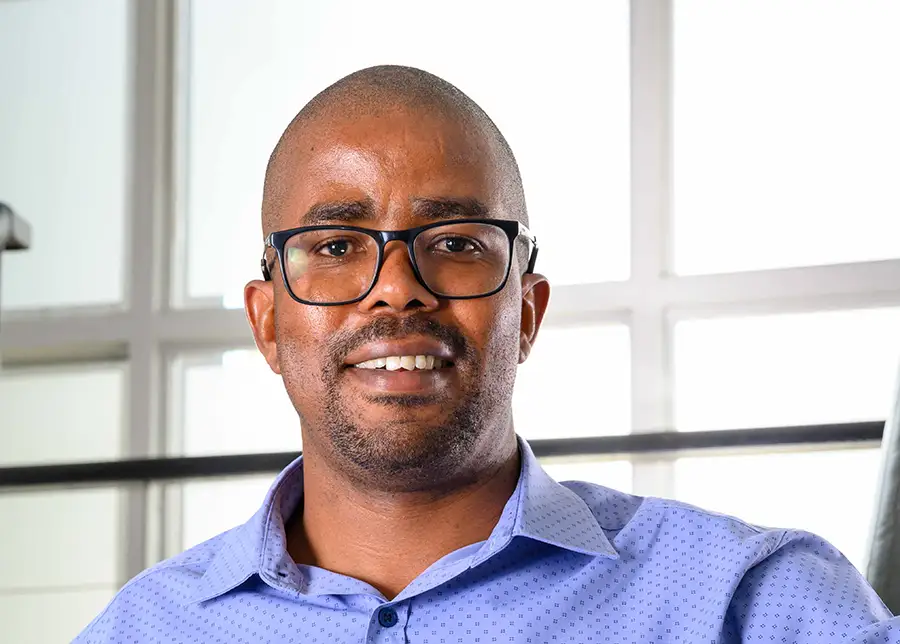
Talking points
Commenting on some of the key talking points of the plant, Kotzé highlights the Weir Minerals modular plant design, which allows for easy interfacing of the various modular stations. Each station is designed as a completely stand-alone system and design verification is done accordingly.
All equipment is mounted on self-contained skid structures, which require only basic civil raft foundations, instead of traditional individual plinths. This reduces the cost of civil works for the client and allows for more flexibility during installation.
“The Weir Minerals modular conveyor system is designed with minimal foundation requirements – standard conveyors only have three low ground pressure support footings; this drastically reduces the civil costs and allows for a very clean plant with easy access into the plant area,” says Kotzé.
The conveyors are modular, allowing for walkways on either side and for different standard installation angles without having to change the standard design. In addition, the conveyors head ends are self-supporting and do not need to be supported by the equipment skid structure which the conveyor is feeding, thus allowing completely modular interfacing between the different stations. By having the conveyors decoupled from the structures, vibration transfers between the various structures are eliminated.
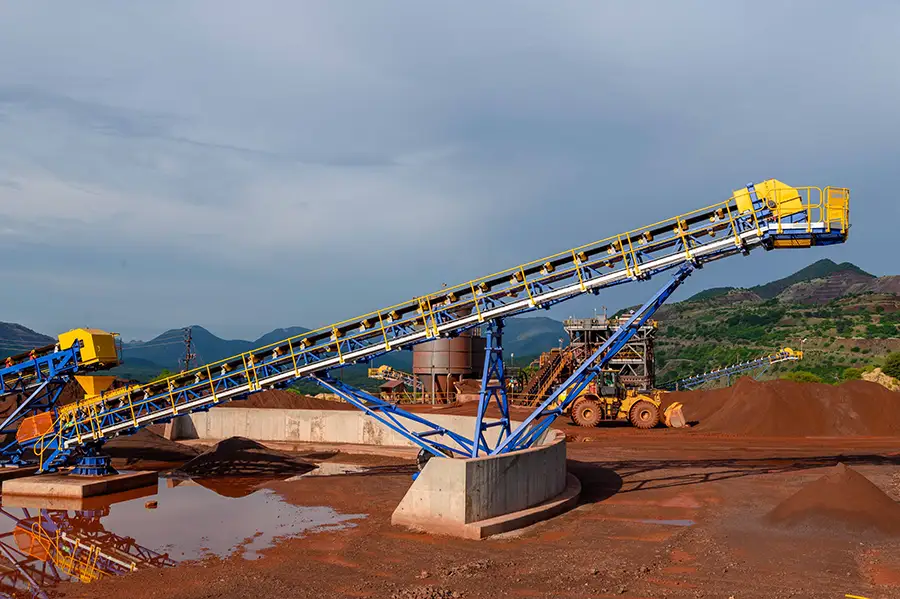
Value proposition
Tiisetso Masekwameng, GM – Comminution Equipment at Weir Minerals Africa, says the Gravmax project speaks volumes about Weir Minerals’ value proposition.
The concept of order qualifiers and order winners explains best how the Comminution team works, she says. Order qualifiers are necessary attributes that a product must possess for it to be considered in the running for a client purchase, while order winners are the ‘winning’ attributes that lead to customers buying a product.
“Our comminution team combined their experience in applications engineering, process engineering and mechanical design into one packaged offer to ensure that we ticked all the boxes for the client on a technical level – and that put us in the running as a legitimate contender for the project,” says Masekwameng.
Weir Minerals, however, set itself apart through an iterative listening process with the clients’ team, being quick and nimble in its responses to meet their needs while using its experience to ensure the delivered solution was going to be efficient and technically sound. This is particularly evident in the conveyor designs, for example, which were a direct output of combined efforts between Weir Minerals and the Gravmax team. The client was strict about access – and Weir Minerals responded by allowing for walkways on either side, while maintaining its design nuances such as conveyors that are decoupled from structures to avoid vibration transfer.
“At the end of the day, Phoenix Global, through Gravmax Africa, had clearly articulated needs and we simply listened and worked tirelessly to deliver. They did not want an off-the-shelf solution; we therefore provided a bespoke crushing and screening solution by using our modular plant while mitigating the various project design constraints of the project. We aimed to provide and succeeded in providing, a safe, easy-to-operate and cost-effective plant to satisfy our client’s specific project needs,” concludes Masekwameng.
